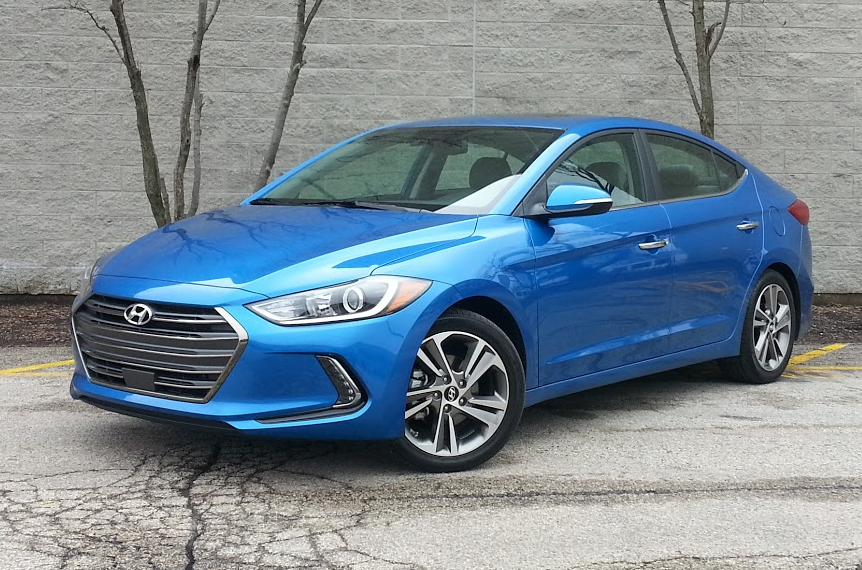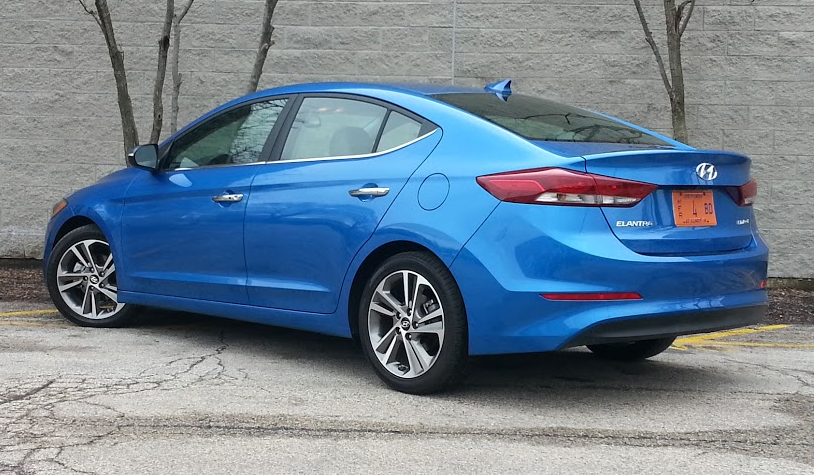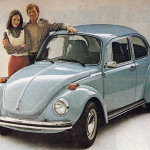
Class: Compact Car
Dates tested: 3/14/2016 – 3/28/2016
Miles Driven: 327
Fuel Used: 11.8 gallons
Real-world fuel economy: 27.7 mpg
| CG Report Card | |
|---|---|
| Room and Comfort | B- |
| Power and Performance | C+ |
| Fit and Finish | B- |
| Fuel Economy | B- |
| Value | B- |
| Report-card grades are derived from a consensus of test-driver evaluations. All grades are versus other vehicles in the same class. Value grade is for specific trim level evaluated, and may not reflect Consumer Guide's impressions of the entire model lineup. | |
| Big & Tall Comfort | |
| Big Guy | B- |
| Tall Guy | B- |
| Big & Tall comfort ratings are for front seats only. "Big" rating based on male tester weighing approximately 350 pounds, "Tall" rating based on 6'6"-tall male tester. | |
Driving mix: 70% city, 30% highway
EPA-estimated fuel economy: 28/37/32 (city/highway/combined)
Base price: $22,350 (not including $835 destination charge)
Options on test car: Tech Package ($2500), Ultimate Package ($1900), mats ($125)
Price as tested: $27,710
Quick Hits
The great: Simple, logical control interface
The good: Refined ride, quiet cabin
The not so good: Cabin trim disappoints for top-line trim level
Check out Consumer Guide’s Compact Car Best Buys
John Biel
Now it’s Hyundai’s turn.
The constant churn of product in the compact class has the Korean company as the latest automaker to update its wares, producing an all-new Elantra sedan for the 2017 model year. In a broad sense, the fastbacklike profile will seem familiar but the new model is an inch wider and almost an inch longer than the current model. Its most glaring appearance change is adoption of the big hexagonal grille design that has become a Hyundai styling cue. Beyond that are a pair of new powertrains, and added tech features for safety and convenience.

It all adds up to a better compact sedan—just maybe not the best one in the class.
Consumer Guide® tried out the Elantra Limited, the higher grade of the two trim levels initially available—the SE is the other, though an Eco model was due to come out in short order. The test car was powered by a 2.0-liter four-cylinder engine new to the Elantra, and a six-speed automatic transmission. (The SE uses this same engine, but with a choice of automatic or six-speed manual gearbox. A 128-horsepower 1.4-liter turbocharged engine with seven-speed dual-clutch automated-manual transmission is slated for the Eco.)
Test Drive: 2016 Honda Civic Touring

The 2.0-liter makes 147 horsepower, which is a couple more ponies than the previous Elantra’s 1.8-liter engine could summon. However, with just 132 lb-ft of torque peaking all the way up at 4500 rpm, performance isn’t eye opening. This powerplant gets a little noisy when put to the test, and the automatic transmission can be somewhat slow to kick down. A “Drive Mode Select” feature adjusts throttle response (and steering effort) but punching up “Sport” mode in place of “Normal” or “Eco” provides only a very slight improvement in acceleration.
In pursuit of improved economy, the engine’s valvetrain employs the Atkinson-cycle principle, which sacrifices some power for more efficient use of fuel. The EPA rates the Limited’s powerteam at 28 mpg in city driving, 37 in highway use, and 32 combined. This driver averaged 27.4 mpg from a trip of 111 miles, 70 percent of which was in city-style driving.
Hyundai devoted some time and energy to revamping the Elantra’s suspension. The result is a fairly well composed and comfortable small-car ride. Steering behavior, while not bad overall, gets an nth firmer—and better—in the Sport setting. Note that the Limited comes with four-wheel disc brakes, while the SE is equipped with drum brakes in back.
Test Drive: 2016 Mazda 3 i Grand Touring
In addition to the items already mentioned, the Elantra Limited’s base price of $22,350 buys 17-inch alloy wheels, LED taillights and daytime running lights, hands-free “smart trunk” that opens when the keyholder stands behind the car, side-mirror turn-signal indicators, door-handle approach lights, chrome body and grille highlights, blind-spot detection with rear cross-traffic alert, 3.5-inch thin-film transistor (TFT) information display in the instrument cluster, seven-inch color touchscreen display audio system, Android Auto and Apple CarPlay connectivity, Blue Link telematics, two charging USB ports, a rearview camera, dual-zone automatic climate control, leather seating surfaces, leather-wrapped steering wheel and shift knob, power driver’s seat with lumbar support, heated front seats, a 60/40 split-folding rear seatback, push-button starting, and remote keyless entry. However, the test car came fully loaded at $27,710 delivered. That was thanks to two packages—Tech and Ultimate—that collectively added things like adaptive headlamps, adaptive cruise control, a navigation system with an eight-inch touchscreen, uprated eight-speaker audio system, 4.2-inch color TFT display, power sunroof, heated rear seats, automatic emergency braking with pedestrian detection, lane-change assist, and lane-keep assist.

Even the upmarket audio system is easy to use. Distinct volume and tuning knobs make selecting and saving station presets a “get-to-it-and-do-it” snap. Just as direct are the climate controls with temperature-setting dials but buttons to operate other functions.
Less user-friendly is a rear seat that will get cramped if tall occupants are riding up front. When this tester, who stands 5’-10.5”, sat behind the driver’s seat as set up for him, his knees were up against the seatback. Effective adult capacity is four. At least they’ll all find enough headroom to be happy. Their stuff will fit in a big glove box, a smallish covered console box, and a covered bin with auxiliary/USB ports and two 12-volt plugs, and a net pouch on the back of the front-passenger seat. Pockets in all four doors incorporate bottle holders, and there are pairs of cupholders in the console and in the rear pull-down center armrest.
The flat-floored trunk features a low liftover and good space for a compact. Small items might fit under the floor in the well around the mini spare. The rear seats fold a few inches above the level of the cargo floor, which might complicate some loading, as will the bulkhead behind the seats that narrows the threshold between trunk and cabin.
The concentration of comfort, convenience, and safety features packed into the 2017 Elantra test car certainly bring it in line with the rising expectations for modern compacts. For instance, many of the same bits of equipment were found on a $27,000-plus 2016 Honda Civic Touring that CG tested a little earlier. However, the Honda boasts better rear-seat room, nicer cabin materials (true soft-touch surfaces in the Hyundai were limited to door centers, armrests, and the console-box lid), lots more power from its 1.5-liter turbocharged engine, and better fuel economy to boot. Nobody said it would be easy in this class.
Test Drive: 2016 Hyundai Sonata Sport 2.0T



